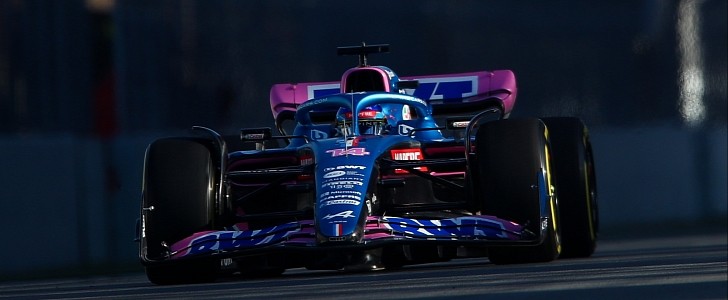There’s been a lot of talk about the new F1 cars bouncing on the track in Barcelona. This weird behavior is called "porpoising." It might surprise you, but it’s nothing new. It happened before this 2022 change as well.
Pre-season testing has begun in Barcelona. We’ve already seen the first red flag of 2022, but it wasn’t about an accident or an unwarranted crash. After the teams have let their drivers enjoy the new F1 cars, we’ve discovered McLaren is on the hunt, while Ferrari and Mercedes-Benz are still shy with their testing. Haas is on a different level: it has once again problems with its sponsors.
Politics and geopolitics aside, there’s something going on with the new cars. They bounce on the track. This effect is known as "porpoising." While not a real term, this word coined by Mario Andretti best describes what’s going on at the Circuit de Barcelona-Catalunya.
Formula 1 teams now have the chance to perfect their designs. This means working on aerodynamics too. And here we meet this "porpoising" effect we’ve been talking about – something engineers thought to be unlikely to appear.
Essentially, the 2022 F1 cars must deal with plenty of downforce when going for the top speed. The pressure is applied to the body and it literally pushes the car down to the ground. The ride height decreases and this can cause the airflow that sticks the car to the tarmac to separate and reduce downforce. The ground effect plays an important role here as it stops temporarily working as intended.
But speed is a key factor in F1 cars' design, so their aerodynamics keeps them planted to the ground even after the small, brutal lift. The downforce increases again with the acceleration, which means that the ground clearance is reduced when the speed rises. This means that it is almost impossible to always keep the vehicle on one ride height. And that's how "porpoising" appears.
It's a cycle of rocking back and forth, or up and down, if you will, to put it in the simplest terms.
It looks funny on the slo-mo camera, but it isn't. This can make the car unstable and damage the chassis. Also, this intense vibration affects drivers' ability to see.
Finally, "porpoising" is not something new. It’s been known since 1982 when Lotus tried to mount their aero kit on a separate frame just to stabilize the car. We’ll see what solutions they find now, especially that drivers complain of feeling physically sick.
Politics and geopolitics aside, there’s something going on with the new cars. They bounce on the track. This effect is known as "porpoising." While not a real term, this word coined by Mario Andretti best describes what’s going on at the Circuit de Barcelona-Catalunya.
Formula 1 teams now have the chance to perfect their designs. This means working on aerodynamics too. And here we meet this "porpoising" effect we’ve been talking about – something engineers thought to be unlikely to appear.
Essentially, the 2022 F1 cars must deal with plenty of downforce when going for the top speed. The pressure is applied to the body and it literally pushes the car down to the ground. The ride height decreases and this can cause the airflow that sticks the car to the tarmac to separate and reduce downforce. The ground effect plays an important role here as it stops temporarily working as intended.
But speed is a key factor in F1 cars' design, so their aerodynamics keeps them planted to the ground even after the small, brutal lift. The downforce increases again with the acceleration, which means that the ground clearance is reduced when the speed rises. This means that it is almost impossible to always keep the vehicle on one ride height. And that's how "porpoising" appears.
It's a cycle of rocking back and forth, or up and down, if you will, to put it in the simplest terms.
It looks funny on the slo-mo camera, but it isn't. This can make the car unstable and damage the chassis. Also, this intense vibration affects drivers' ability to see.
Finally, "porpoising" is not something new. It’s been known since 1982 when Lotus tried to mount their aero kit on a separate frame just to stabilize the car. We’ll see what solutions they find now, especially that drivers complain of feeling physically sick.







